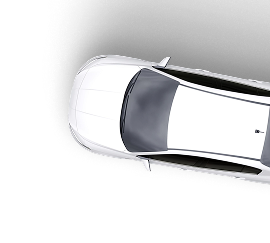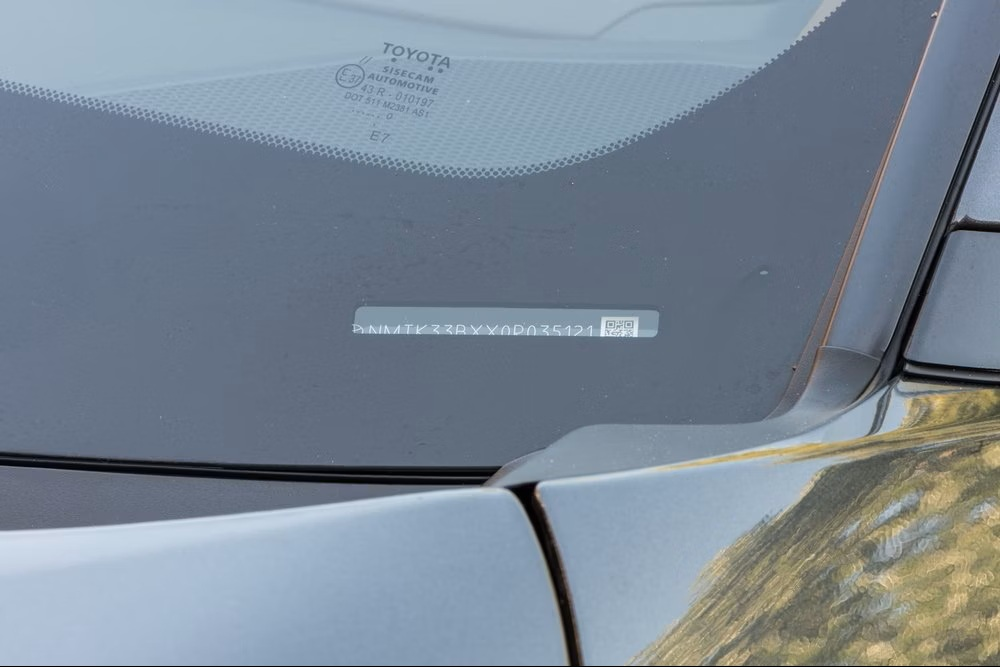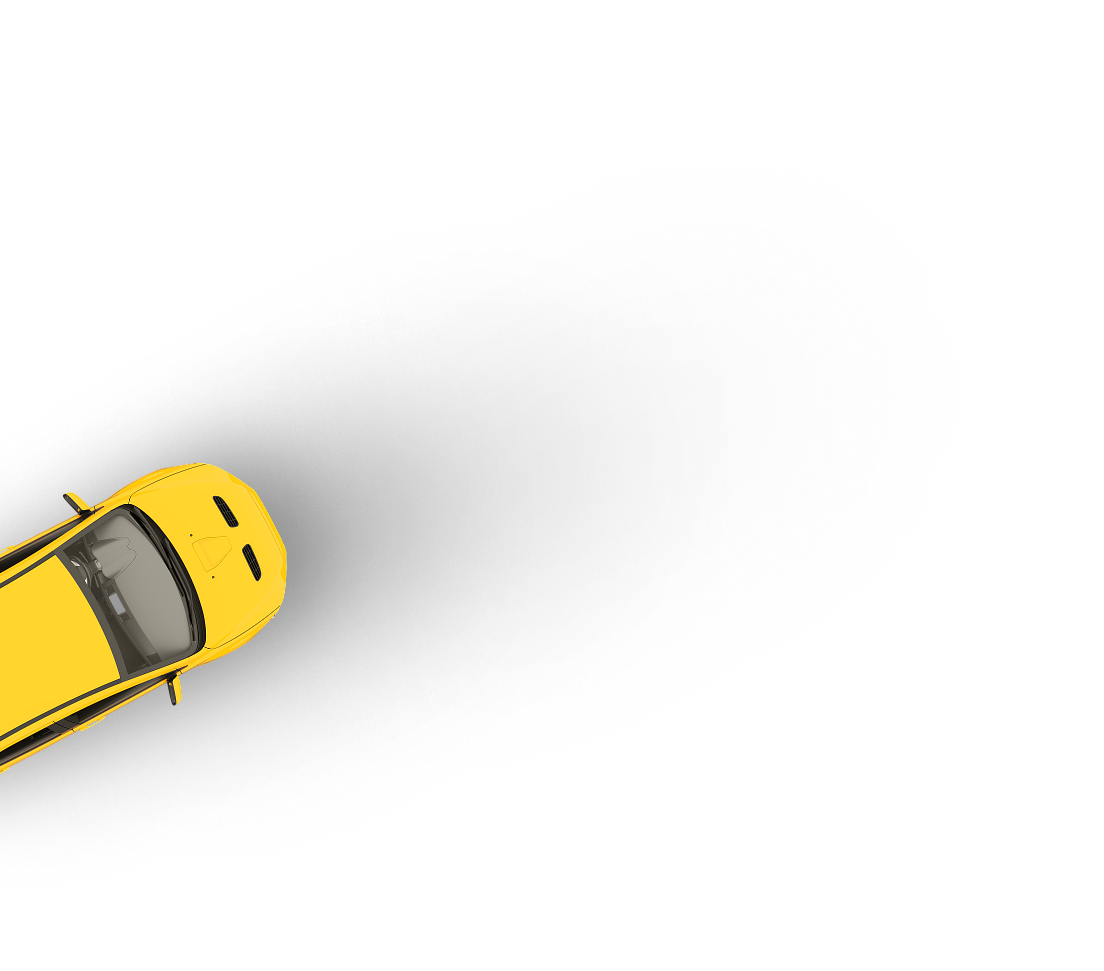Trade to trade car marketplace


Trade-only marketplace
Flexible selling options
Maximise your profits
Thinking of buying a car without a V5C logbook? It’s legal but risky. From stolen vehicles to re-registration nightmares, skipping the paperwork costs some buyers big time. This guide breaks down what the V5C is, why it matters when buying a car and how to protect yourself before making a costly mistake.
Last updated: 4th August, 2025

Listen to this story
Thinking of buying a car but the seller doesn’t have the V5C logbook? It’s not illegal to buy a car without one, but it does raise some red flags. And if you’re not careful, it can potentially end in fines, paperwork headaches or worse, a car you can’t keep.
In this guide, we’ll break down exactly what the V5C is, why it matters, the risks of buying without one and how to protect yourself if you decide to go ahead.
The V5C, also known as the logbook, is an official DVLA document that proves who is responsible for registering and taxing a vehicle. It lists the current “registered keeper”, which isn’t necessarily the legal owner but is the person responsible for the car day to day.
Here’s what the V5C includes:
Without it, there’s no straightforward way to prove the seller has any legitimate link to the car or right to sell it.
That’s why the V5C matters. It’s not just a bit of paperwork, it’s one of the strongest signs the car isn’t stolen, cloned, or involved in outstanding finance. It also makes the transfer of ownership with the DVLA fast and simple.
Yes, you absolutely can.
There’s no law that prevents you from purchasing a vehicle without a V5C logbook. However, legally allowed doesn’t always mean optimal. There are serious practical risks and inconveniences you’ll want to understand before signing on the dotted line.
The DVLA doesn’t forbid sales without a V5C, but they adamantly say you should never do it. They also stress that if the vehicle doesn’t have a logbook, the buyer must apply for a new one. That means sending off an application using form V62, paying a fee and waiting several weeks (sometimes months) for the replacement V5C to arrive.
There are plenty of myths floating around:
Relying on hearsay or verbal promises won’t protect you later. Always ask yourself why it’s missing.
Legally, you can buy a car without a V5C logbook in the UK, but you’ll need a bill of sale or invoice for your records. You’ll include that invoice with your application for a new V5C logbook. It is a criminal offence to not notify the DVLA when you buy a new car, so you’ll have to do that once you have the new logbook. You cannot drive the vehicle until then.
Buying a car without a V5C might seem like a good deal at first. Most sellers will shave off a good amount of the asking price to account for the fact it’s missing that crucial document. But there are reasons the DVLA (and practically all experts) advise against moving forward.
The V5C is one of the few documents that helps you confirm the car isn’t stolen. If a seller can’t produce it, you have no easy way to check whether they’re the legitimate keeper. If you buy a stolen vehicle, you’ll lose both the car and your money if police later seize it.
Cars on finance don’t legally belong to the seller, they belong to the finance company. And if it’s a write-off, insurers may have paid out and branded it Category A, B, S or N. Without a V5C, it’s harder to spot these red flags.
If the car doesn’t have its V5C logbook, you might unknowingly buy a car you can’t legally own, insure, drive or sell later on. Not to mention, its damage history could mean massive maintenance costs that you weren’t prepared for.
Cloned vehicles use false number plates and stolen V5C details to appear legitimate. If a car is cloned and you buy it without paperwork, there’s a high chance it’s tied to criminal activity. You’ll likely lose the car (and good luck tracking the original seller once they disappear).
The V5C itself isn’t proof of legal ownership. But it does confirm that the person selling the car is its registered keeper, and in most legitimate sales, that’s the same person who owns it outright. Without it, you’ve got no real proof they had the right to sell the car at all.
If the vehicle is on finance or leased, it legally belongs to the finance company or leasing firm — not the seller. If it's stolen, you're not buying from the rightful owner. And if the car turns out to be either, it can be taken from you without compensation.
If the seller doesn’t have the V5C logbook, then they can’t give you the new keeper slip (V5C/2). That means you can’t notify the DVLA online or by post in the usual way. You’ll have to apply for a new one (form V62), pay a fee, and wait weeks. In the meantime, you can’t legally tax the car, which means you can’t drive it on public roads.
Not every missing V5C means something shady is going on, but it’s always a red flag worth investigating. Here are some legitimate (and semi-legitimate) reasons a car might be without its logbook:
The most common excuse. Plenty of people misplace their logbook and never bother requesting a replacement, especially if they weren’t planning to sell the car anytime soon.
That said, any genuine seller should be willing to apply for a new V5C before the sale, or let you wait until it arrives. If they refuse, you have to ask yourself why.
Sometimes a car has just changed hands — say, from a trade-in or auction — and the seller is still waiting on the updated logbook from DVLA. It’s not unusual, but it does leave a gap in the paper trail.
Ask for documentation showing when the application was submitted (like a V62 receipt or confirmation email). Then, hold off on the purchase until it arrives.
If the vehicle has just arrived from abroad, it won’t have a UK V5C yet. Instead, the seller should have import paperwork and proof they’ve applied to register the car with the DVLA.
Until the V5C is issued, the car can’t be taxed or driven on public roads, so if they’re offering test drives or claiming it’s “road-ready”, that’s a red flag
Some older cars, barn finds, write-offs and heavily damaged vehicles being sold for parts won’t come with a logbook. In these cases, the seller might be upfront that the car is being sold “as-is” or for restoration.
That’s fair, but remember that without a V5C, you’ll have to do the legwork to register it yourself and will face extra hurdles if important details are missing or unclear.
If you’re seriously considering a car without a logbook, treat it like a high-risk transaction. Take every step you can to protect yourself.
Here’s what to do:
Before anything else, run a full HPI or similar check using the car’s registration number. This will flag up:
These checks cost a few quid (£20 to £40, depending) but will wind up saving you thousands if the car had something sketchy going on with it. If anything doesn’t add up, don’t move forward.
The DVLA's free vehicle enquiry tool lets you check key details like MOT status, tax, and registered keeper changes. Compare what the DVLA says to what the seller claims. If they say “I’ve owned it for years” but the DVLA shows it changed hands last month, that’s a red flag.
Check vehicle information from the DVLA here.
Every car has a Vehicle Identification Number (VIN), usually found:

Make sure the VIN on the car matches the one shown in any documentation the seller provides (e.g. MOT certificate or service history). If they don’t match or one is scratched off, avoid.
Insist on a proper written receipt that includes:
Don’t settle for vague messages or verbal agreements because this is also what you’ll need when you tell the DVLA you’re the new keeper and apply for a logbook.
In the UK, previous owner and registered keeper info is protected by data protection laws, so it isn’t publicly available. Simply buying a car without a V5C does not qualify as “reasonable cause” for requesting keeper details from the DVLA.
However, you might be able to get their contact details from the person selling you the car. If you can, they’ll be able to vouch for the legitimacy of the sale.
You want to use a traceable payment method if you’re going to buy a car without a V5. Use a bank transfer or card payment that leaves a paper trail. It could help later if things go wrong. If the seller insists on cash only, chances are they’re doing something illegal.
Yes, but only if the car is legitimately yours and you’ve got enough evidence to prove it.
If you do go ahead with the purchase, and there’s no V5C, you’ll need to apply for a replacement logbook through the DVLA. This isn’t instant, and it doesn’t guarantee success if something about the sale doesn’t check out.
To request a new V5C, you’ll need to:
Next, the DVLA will check the vehicle’s records and may contact the previous keeper. If there are no issues, they’ll send you a new V5C logbook in your name within 4 to 6 weeks. You’ll then be able to tax the car online using the new V5C reference number.
Applying for a replacement V5C costs £25 and usually takes around 4 to 6 weeks. That’s assuming everything goes smoothly. If the DVLA needs to investigate (for example, to confirm ownership), it will take longer.
Delays in the V62 application and V5C replacement processes are common if:
During that time, you can’t tax the car or drive it legally. If you’re relying on the vehicle right away, this is a serious problem.
Once you send in the V62 form, the DVLA will try to confirm the sale.
The previous keeper is legally obligated to tell the DVLA once they’ve sold their vehicle or face a £1,000 fine. But if the records don’t show a recent notification of change of keeper, they’ll contact the last registered keeper by post to ask if they sold the vehicle.
Only when they get confirmation — or after a set waiting period of about six weeks — will they issue the new V5C in your name.
If everything checks out, the DVLA updates the system and issues your new V5C. However, if issues arise (e.g. outstanding finance, conflicting claims), they’ll hold your application and contact you.
If the seller wasn’t the registered keeper, things get messy.
If DVLA contacts the last keeper and they say they never sold the car, your application will be rejected. Worse, it will probably trigger a stolen vehicle investigation and the car could be seized.
You’ll have no legal standing to claim the vehicle if it turns out the person who sold it to you wasn’t authorised to. Even if you paid in full and have a receipt, that won’t protect you.
That’s why verifying the seller’s connection to the car before buying is so crucial.
If a seller can’t produce a V5C, you’re already in risky territory. There are, however, a few instances where it’s definitely a good ideal to stop going through with the sale.
Is the seller rushing the sale and refusing a bank transfer? That’s classic scam behaviour. Cash leaves no trail, which is exactly what a dodgy seller wants. And if they’re trying to get rid of it quickly, chances are they stole the vehicle and don’t want to be caught with it.
A genuine seller should have no issue confirming who they are. This is also information that you and they will need for your respective DVLA correspondence. If they dodge the question or refuse entirely, assume the worst.
“It was my cousin’s mate’s car” isn’t good enough. If the story keeps changing or they can’t answer basic questions about who owned the car and when, don’t proceed. It’s easy to run an HPI Check, and you’ll see right there how many previous keepers the car was assigned to.
Unless it’s a new car (under three years), most legitimate owners will have at least one MOT cert or garage invoice. If they’ve got nothing to show for and no V5C, the car could be stolen or clocked.
If you are shown a V5C and the car is nowhere near that address, ask why. If there’s no clear answer, the car was probably cloned or stolen, and that V5C they showed you is probably fake.


Sometimes, vehicles sold at auction don’t come with a V5C. That’s especially true for salvage, repossessed and trade-in cars. But does that make it safer than buying privately without one? Not necessarily. Auction houses operate under different assumptions, but the same risks still apply if you're not careful.
Auction houses are intermediaries, not owners. They often list cars “sold as seen” and if there’s no V5C, they’ll state that clearly.
As the buyer, you’re expected to do your own due diligence and once the hammer drops, there’s rarely any comeback. Some auctions specialise in salvage or finance repossessions, where missing paperwork is common but still carries risk.
Yes — and you should. Even without a V5C, you can run a full HPI check to flag theft, write-offs, or finance, a DVLA MOT history and tax status using the reg plate, and a VIN verification (if the car is physically accessible pre-sale).
Some auctions provide this info upfront, but not all do. If you can’t inspect the car or verify its ID, proceed with extreme caution on the auction date.
If you win the bid, you should at least receive:
This paperwork is crucial if you later apply for a new V5C through the DVLA. Keep everything because you’ll need to prove you bought the car legitimately
Cars bought at auction without a V5C are hard to re-register and even harder to sell on later. You’ll have to apply via a V62 form, pay the fee and wait for DVLA to process it. If DVLA spots any inconsistencies or can’t confirm your ownership, they’ll delay or reject your application.
And if you ever try to sell the car without a V5C, most buyers will walk away, just like you should’ve.
No, buying a car without a V5C is never worth the risk.
If a seller is genuinely the registered keeper and has nothing to hide, they can request a replacement V5C in minutes. It takes 5 working days to arrive from the DVLA. They can do it online or by phone, and it costs just £25.
So ask yourself: Why wouldn’t they?
There is no logical reason to sell a car without a V5C unless:
You’re risking your money, your legal standing, and possibly the car itself, all to save someone else a minor admin task they could’ve sorted a week ago.
Award-winning CEO driving growth and social impact across automotive, recycling, and technology-led enterprise platforms.
If a seller can’t be bothered to request a replacement V5C (which is something they can do online in minutes), that’s your cue to walk away. The V5C is a formality, yes. But it’s one of the few protections buyers have against fraud. No logbook, no deal.”
If a car you’re interested in doesn’t have a V5C, that doesn’t mean you have to take the risk. You’ve got better options that don’t involve gambling with your money.
This is the most logical solution. Tell the seller to request a new V5C before you buy. It takes 5 working days (or less) and costs £25. If they refuse or make excuses, you’ve got your answer — walk away.
There are tens of thousands of used cars on the market with full documentation and verified ownership history. There’s no shortage of sellers who provide the original V5C, full MOT and service history and a clear vehicle history report.
If you’re buying through a trade source, stick to reputable dealers or established auctions with clear buyer protection.
Some offer guarantees, return windows, or at least a formal complaints process.
While no method is risk-free, you’ll have far more recourse than with a private seller off Facebook Marketplace who ghosts you the second the cash changes hands.
The V5C isn’t proof of legal ownership, but it does show who’s responsible for the car in the eyes of the DVLA. Without it, a seller would need to rely on other documents to back up their claim.
They might show:
But even with all of that, it’s not definitive proof they’re legally entitled to sell the vehicle. If they’re genuine, they should just request a new V5C before the sale. That’s the simplest, cleanest way to remove doubt.
Insuring? Yes, sometimes.
Taxing? No.
You can insure a car without the V5C as long as you have the registration number and vehicle details (make, model, etc.). Many insurers don’t require the logbook itself, but they may ask for proof of purchase, especially if the V5C is missing.
To tax a vehicle, you need the 11-digit reference number from the V5C or the new keeper slip (V5C/2). If you don’t have either, you’ll need to apply for a new V5C using a V62 form and wait until the DVLA issues it before you can tax the car.
A cloned car is a stolen vehicle that’s been given the identity of a legitimate one. Criminals copy the registration, VIN, and sometimes even fake documents to make it look legit.
If you buy one, the police will seize it as soon as it's flagged during an MOT, roadside check or insurance claim. You won’t get a refund, even if you bought it in good faith. And you could face an investigation if the seller can’t be traced and there’s no clear paperwork.
In most cases, no. Particularly if you bought privately and without proper documentation.
Here’s how it breaks down:
At the end of the day, if something goes wrong and you didn’t do your due diligence, getting your money back is very unlikely. And assuming the seller truly is the registered keeper and they don’t have outstanding finance on the car, getting a new V5C is fast and straightforward.
That’s why it’s critical to treat a missing V5C (and refusal to get a new one) as a major red flag.
If you still decide to go through with the purchase, know you are doing so at a tremendous risk to yourself. And prepare for the upcoming legwork you’ll have to do to get the new V5C in your name and eventually get it on the road.

